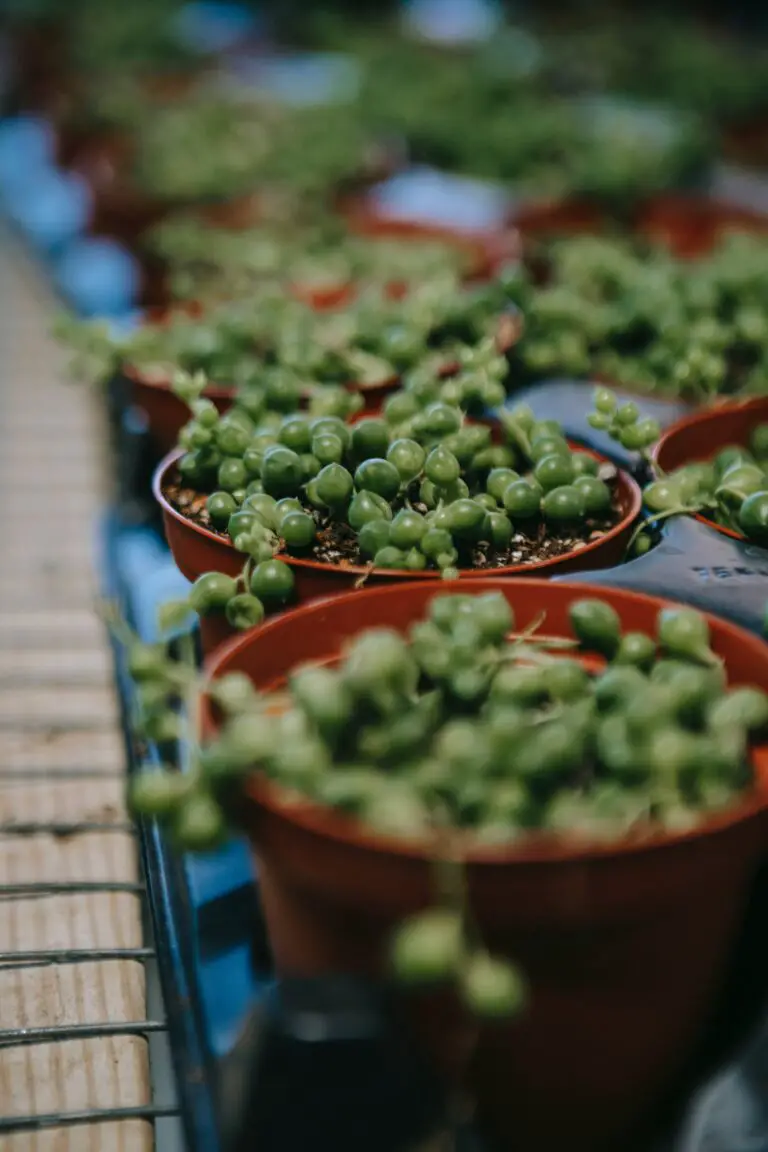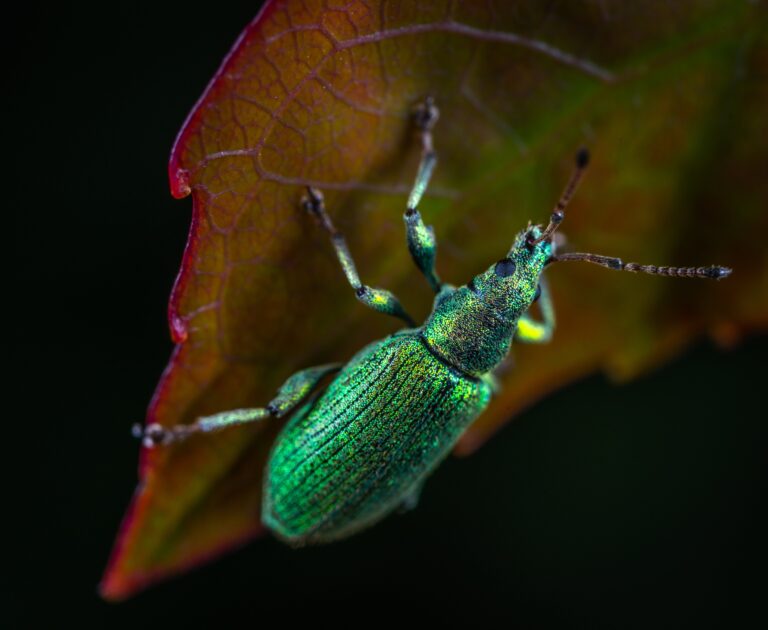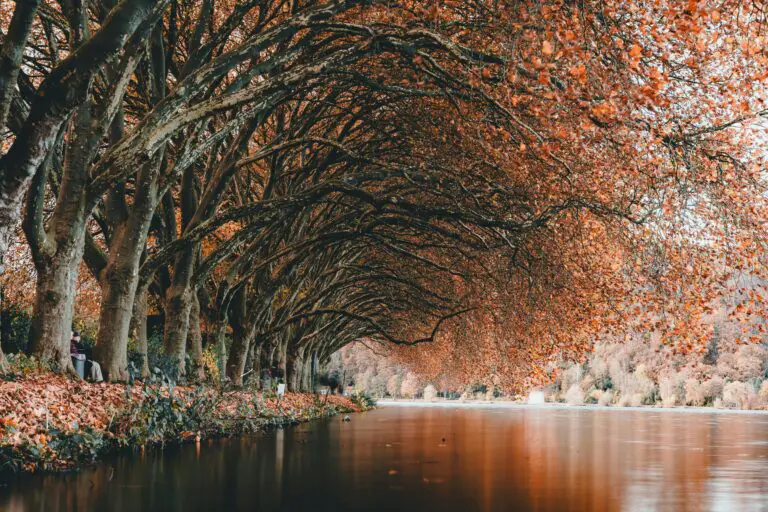Unlock the Mystique of Senecio Vitalis
Imagine a succulent that captures the essence of the ocean’s waves, curled and cool, with an elegant poise that whispers tales of mystic gardens — this is Senecio Vitalis. With its textured, serpentine leaves that radiate an alluring blue-green hue, Senecio Vitalis stands out as a mesmerizing sculpture in the succulent world.
Why has this particular succulent entwined its way into the hearts of plant enthusiasts? It’s simple. Senecio Vitalis, also known as Narrow-Leaf Chalksticks, brings life to the dullest of spaces with its vibrant color and fascinating form. It’s not just a plant; it’s a living artwork that prompts intrigued glances and sparks conversation.

This succulent isn’t just about aesthetics, though. It’s as resilient as it is beautiful, demanding minimal care and thriving in those tricky sunny spots where other plants might falter. Aspiring green thumbs revel in its simplicity, while seasoned gardeners appreciate its versatility in landscape design. From clustering in rock gardens to serving as striking borders, Senecio Vitalis adapts splendidly to various settings, effortlessly elevating the ordinary into the extraordinary.
An invitation to the world of succulents often begins with the familiar sight of an Aloe or a spiny Cactus, but a dive deeper reveals the true stars like Senecio Vitalis. Those looking to expand their succulent collection might find themselves enchanted by this stunning variety, as it quietly demands attention yet harmonizes with its surroundings.
Take, for example, a coastal garden scene where the blue-green hues mirror the nearby sea, with the leaves of Senecio Vitalis oscillating gently in the salty breeze. It’s not just a plant but an embodiment of the landscape it inhabits. In such vignettes, Senecio Vitalis tells its unique story, one where the serenity of nature meets the thrill of discovery.
Native Habitats and Botanical Background
Immerse yourself in the captivating world of Senecio Vitalis, a succulent treasure that embraces its coastal origins with grace and vigor. Native to the eastern capes of South Africa, this plant has mastered the art of survival amidst sandy dunes and rocky shorelines. In these native habitats, Senecio Vitalis basks in the full embrace of the sun, its roots delving deep into well-draining soils, boldly claiming its place within the dynamic succulent family.
Often dubbed the ‘Narrow-Leaf Chalksticks’, this botanical wonder showcases a symphony of blue-green hues that rival the ocean’s splendor. Gardeners worldwide covet its resilient nature and serpentine-like appearance that scripts a visual story of adaptation and allure. Its natural habitats provide a blueprint for cultivating your own slice of serpentine beauty, suggesting ample sunlight and a loose, sandy substrate akin to its native land. For an in-depth exploration of its unique survival strategies, check out this comprehensive guide.
Witnessing Senecio Vitalis in its natural environment is akin to watching an artist at work, painting the landscape with strokes of silvery-blue. However, the real magic happens when these plants are translated into domestic gardens, where they play a pivotal role in drought-resistant and seaside landscapes. For tips on planting and care, why not peruse this valuable resource?
Envision a coastal cliff adorned with cascades of Senecio Vitalis, each plant a testament to the tenacity and diversity of the succulent family. It isn’t just their aesthetic appeal that captures the heart; it’s their embodiment of resilience in face of climatic adversities. Gardeners aspiring to emulate these scenic vistas must recognize the importance of mimicking the plant’s coastal origins, ensuring a microcosm of its native habitat in their own backyards.
From the sweeping landscapes of South Africa to the heart of your garden, Senecio Vitalis exudes botanical charisma and an ease of care that belies its exotic lineage. Embrace its unique background and transform your space with this sentinel of the succulent world. Experience the full potential of Senecio Vitalis by integrating it into your life and witness a masterclass in botanical splendor.
Optimal Growth Conditions for Senecio Vitalis
If you fancy a succulent with a unique persona, Senecio Vitalis, also known as Narrow-Leaf Chalksticks, is a standout choice. Whether it’s upgrading your home’s greenery or adding diversity to your garden, this serpent-like beauty compels attention with its blue-green, finger-like leaves. But to flourish, this radiant succulent requires specific environmental caresses, akin to a tune that it dances to best.

Picture this succulent basking in a sun-drenched spot where it can soak up the rays like a languid lizard. Sunlight is the symphony to its growth – a full six hours of bright, indirect light will keep its colors vivid and its form compact. Ensure the symphony doesn’t turn into a scorching opera by giving it some shade during the hottest parts of the day, especially in peak summer.
Turning our attention to the soil stage, Senecio Vitalis craves a mix that’s well-draining and breathable. Think of it like a cozy, yet spacious jazz club where the bass of moisture can flow freely without drowning the roots. A blend of potting soil with sand or perlite hits the right notes for maintaining that delicate moisture balance.
Now, hydration for Senecio Vitalis is a melody that should be played sparingly. It’s like a succulent sipping an exquisite cocktail – too much and it gets soggy, too little and it thirsts. When the top inch or so of the soil feels dry, it’s time to water deeply, letting the excess drain out. This mimics the erratic rainfall of its natural habitat, keeping its rhythm unhurried and steady.
Visit our comprehensive guide to succulent soil to discover more about creating the perfect environment for your succulents.
When it comes to the ambient temperature, Senecio Vitalis is quite the cool customer, preferring the temperate to warm zones that don’t dip below freezing. If winter’s frosty fingers threaten, it’s paramount to pull your succulent into the warmth of an indoor haven. And as for humidity, this plant is no diva, acclimating to dry conditions like a pro.
Understanding and administering these optimal conditions will ensure your Senecio Vitalis grows healthful and vibrant. Treat it right, and this serpent-esque plant will uncoil its full glory, adding a touch of blue-green splendor to your life.
Planting and Propagation Pointers
Embarking on the journey of cultivating Senecio Vitalis can fill any plant enthusiast’s heart with excitement. It’s not just about burying seeds in soil—it’s an art, a science, and somewhat akin to a culinary adventure where the right ingredients result in a lush, blue-green masterpiece. So, roll up your sleeves and let’s dive into the step-by-step guide of planting and nurturing your very own Serpent’s splendor.
The first step in this verdant voyage is picking the perfect spot for your Senecio Vitalis. This beauty thrives in a place where the sun gently kisses its leaves, imparting a glow to the subtle blue-green foliage. Imagine a sunbathed corner of your garden or a sunny windowsill indoors that beckons you and your Senecio. If you need visual guidance on setting up the ideal home for your plant, check out this engaging video guide that walks through the essentials of succulent care and repotting.
Let’s talk soil—the bedrock of healthy growth. Not all soil is created equal, especially for our serpentine succulent. You need a well-draining mixture that allows for good aeration and wards off any waterlogging woes. A standard cactus mix does the trick, or make your own by combining potting soil with perlite or coarse sand. Mildly sandy soil that mimics the Senecio’s natural habitat will have your plant thanking you in vibrant growth.
Now, the fun part – propagation! It’s like creating little clones of your beloved plant. Senecio Vitalis propagates with ease, especially from cuttings. Snip a healthy piece, let the cut end callous over for a day or two (this is crucial to prevent rot), and then gently nestle it into the soil. Patience is key here – roots take time to twine and grip. Give your cuttings a spritz, not a shower, to coax out those tiny root threads.
Mother Nature’s little secrets are often hidden in plain sight, like the power of a leaf. With Senecio Vitalis, you can even propagate from a single leaf. Place it on top of the soil and wait for the magic to happen. Roots will seek out the soil, and soon after a miniature rosette will emerge. It’s a slow but rewarding spectacle, as if you’re witnessing the birth of a green star.
To ensure success, it’s essential to follow a proper care guide for Senecio Vitalis. While we’ve covered the highlights, don’t hesitate to delve into a more detailed care manual that outlines the nitty-gritty of tending to this enchanting succulent.
Remember, the ritual of planting and propagation is as much about enjoying the process as it is about achieving results. Each step—from choosing the perfect location, selecting the right soil, making precise cuttings, to patiently waiting for roots to develop—is a chapter in the story you’re crafting with your Senecio Vitalis. It’s a tale of patience, care, and growing joy—one that continues to unfold with each new shoot and root.
Care and Maintenance Mastery for Senecio Vitalis
Unlocking the secrets of the alluring Senecio Vitalis begins with understanding its unique demands. In the journey to cultivate its mesmerizing blue-green foliage that spirals like an oceanic serpent, one must offer it the right balance of sunlight, hydration, and vigilant care. Let’s dive into the regimen that will keep your Senecio Vitalis not just surviving, but thriving with splendor.
Watering Wisdom: Hydrate, Don’t Drown
The Serpent Senecio, or Senecio Vitalis, craves a drink just as much as the next plant but despises wet feet. Picture this: you’re giving your cherished succulent a gentle quench under the golden morning rays. That’s right, mornings are their favorite! Weekly watering during growth seasons, while letting the soil dry completely between sessions, mimics the desert’s sporadic rains they so adore. Overwatering? That’s the villain in our real-life story, leading to root rot, which our serpent definitely detests.
Let There Be Light: Sunbathing the Senecio Way
Now imagine your Senecio basking in the glow of the sun, stretching out its leaves as it lazes in a sun-soaked corner of your garden or window sill. These succulents are sun-worshippers, requiring six hours of sunlight to maintain their vibrant hue. Too little light, and your serpent may become a languid, pale shadow of its potential. But in the scorching sun of high summer? A little shade will prevent sunburn, protecting its elegant form.
Common Pitfalls: Avoiding the Perils
Every seasoned succulent enthusiast has a tale or two of a beloved plant they’ve lost to a common blunder. Too much love – also known as overwatering – is the usual suspect. But let’s not forget about poor drainage. Your Senecio Vitalis will thrive in a pot that allows it to drain like a sieve, unfettered by stagnant moisture. Neglect proper drainage at your own peril, for it’s a sure path to root rot, a tragic end to our deep-sea mimic’s story.
Embark on this care regimen with fervor, and your Senecio Vitalis will reward you with growth as vigorous and winding as the serpent it resembles. Keep these pointers in mind, and you’ll be the sage of succulent health, with a vibrant Senecio Vitalis as your crown jewel.
Dealing with Pests and Potential Diseases
Every plant enthusiast dreams of their Senecio Vitalis thriving, its serpentine leaves snaking towards the sun in a vibrant display of blue-green vigor. But what happens when your botanical buddy faces the dark side of the garden galaxy? Pests and diseases, the silent saboteurs! Let’s get down to how you can spot and stop these tiny invaders.
Imagine you’re sipping your morning coffee, enjoying the view of your garden, when you spot some unsightly spots or some tiny critters playing acrobats on your beloved Senecio Vitalis. Alarm bells! Those could be aphids, mealybugs, or spider mites. These little beasts aren’t just there for a playground; they mean business. They suck the sap right out of plants, leaving poor Senecio Vitalis looking like it had a rough night.
Spotting the Culprits
Let’s meet some of the usual suspects. Some come in gangs, like aphids. These tiny green or black vampires gather on the undersides of leaves, plotting their next move. Then, there are the mealybugs, fluffy white house criminals that leave a sugar-laden trail of sticky honeydew. And let’s not forget spider mites, tiny arachnids that surround your plant with cobwebs of doom.

These marauders can invite other problems, too. Honeydew attracts sooty mold, a black fungus that could gate-crash your garden’s Green Party. Diseases aren’t far behind, with fungal and bacterial infections taking advantage of weakened plants.
Protective Measures and Combat Strategies
Before you wage war, it’s crucial to establish a defense. Regular inspections are your watchtower. Be on the lookout for discoloration, distortion, or mysterious stickiness on leaves. Isolation is your quarantine play when a new plant enters your Eden, keeping intergalactic pests from spreading.
When it’s battle time, think of yourself as Mother Nature’s general. A strong blast of water can dislodge aphids and mites like a mini tsunami. Natural predators, such as ladybugs and lacewings, are your allies, swooping in without the need for a bat-signal. In dire situations, organic insecticidal soap or neem oil can be your secret weapons, terminating pests with precision while being gentle on our green friend here.
Remember, the best offense is a good defense. Ensure your Senecio Vitalis is living its best lifestyle – proper sunlight, watering, and nutrition. A stressed plant is a beacon for trouble, so keep it happy, and you’ll keep it healthy.
Senecio Vitalis in Landscaping and Interior Decor
If you’ve set your sights on a unique and dynamic plant to enliven your home or garden, look no further than Senecio vitalis. Often lauded for its blue-green foliage that resembles a sea creature’s tendrils, this succulent adds an otherworldly charm to any setting. Let’s dive into the many ways you can weave the magic of Senecio vitalis into your personal spaces.
Envision the flowing form of Senecio vitalis spilling over the edges of a striking, modern container on your patio. Its resilient nature and minimal water requirements make it a hassle-free companion for busy homeowners. For a touch of seaside whimsy, why not pair it with shells and driftwood elements? The contrasting textures are sure to create a vivacious tableau that captures the essence of the coast.
In a more traditional garden setting, Senecio vitalis stands as a proud, drought-tolerant sentinel amidst a sea of flowers. It’s particularly stunning when used as a specimen plant or when grouped in clusters to form a living sculpture. The serpentine shape of its leaves forms a vivid contrast against the soft, organic shapes of ornamental grasses or the bold blooms of a sunlit perennial bed.

Indoors, Senecio vitalis transforms into a striking statement piece. Imagine it as a living work of art, gracing a minimalist room where its form can be appreciated from every angle. It thrives on neglect, asking for little more than a sunny spot away from the hustle and bustle of daily life. As it grows, it becomes a conversation starter, an undeniable focal point that draws eyes and starts discussions about the marvels of nature’s design.
When incorporating Senecio vitalis into your indoor decor, think beyond the pot. Mount it on a piece of reclaimed wood for an eco-chic wall hanging, or let it cascade from a hanging planter, inviting onlookers to immerse themselves in its serene visual flow. Combine it with warm, earthy colors or cool metallics to enhance its serene, oceanic vibe. The versatility of this plant is unmatched, allowing for boundless creativity in your design approach.
The use of Senecio vitalis in both landscaping and interior decor affords an opportunity to craft an ambiance of calm and timeless beauty. Its ability to adapt and thrive in various environments makes it a gem for any design aficionado. So next time you’re looking to add a splash of blue-green splendor to your surroundings, let Senecio vitalis be your muse.
Troubleshooting Tips for Thriving Plants
When it comes to growing Senecio Vitalis, also known as Narrow-Leaf Chalksticks, even those with a green thumb can encounter a few bumps along the road. Fear not, for every common problem, there’s a solution that can lead you back to a garden graced with their blue-green splendor.
The Wilting Conundrum
Picture this: you’ve just started your morning routine, coffee in hand, and your gaze lands on your Senecio Vitalis—but instead of reaching for the sun, its leaves droop in dismay. Don’t panic. This could simply be a sign of underwatering. Give them a thorough drink, ensuring excess water drains away, and watch as they perk up over the next couple of days. Consistency is key; mark your calendar to water them regularly, but adjust based on the season and your plant’s specific needs.
Battling Root Rot Revival
As resilient as your serpent-like succulent appears, its roots can fall victim to excess moisture. If your plants are looking a little lackluster and you suspect root rot, swiftly remove the plant from its soggy abode. Trim away any blackened or mushy roots, and repot in fresh, well-draining soil. Believe it or not, Senecio Vitalis prefers to stay on the dry side, so a light hand with the watering can and a pot that encourages drainage will go a long way.
Overcoming the Sunburn Scuffle
It’s a sunny day, and there they are, the sculptural leaves of your Senecio Vitalis revealing signs of sunburn. If your plant’s leaves have started to look a bit scorched, it’s time to rethink their position. They love the sun but can appreciate some afternoon shade. Gradually introduce them to brighter spots to prevent sunburn, and they’ll maintain their vibrant hue without the scorched edges.
The Pest Predicament
Imagine you’re admiring the unique, serpent-like foliage, and you catch sight of unwanted guests. Pests like aphids and mealybugs can sometimes invite themselves to the Senecio Vitalis party. Mix up a batch of insecticidal soap or neem oil, apply it to the affected areas, and bid those pesky freeloaders farewell. Regular inspections and immediate action can keep your plants in pristine condition.
Discoloration Dilemma
Is your Senecio Vitalis losing its characteristic blue-green charm? Discoloration could be a sign of nutrient deficiency. A balanced, slow-release fertilizer can restore their vigor. However, remember that less is more—overfertilization is the enemy of many succulent species and can lead to weak, leggy growth.

By staying vigilant and responsive to the subtle cues your Senecio Vitalis plants provide, you can swiftly navigate common issues and ensure your succulents thrive. Remember, every plant has its own personality and preferences—get to know them, and they’ll reward you with their stunning, serpentine beauty.
Harnessing the Unyielding Beauty of Senecio Vitalis Year-Round
Imagine a swath of blue-green waves rolling into your garden, the mesmerizing appeal of Senecio Vitalis sweeping through your space regardless of the season. This succulent, with its serpent-like leaves, not only adds a touch of exotic allure but also stands resilient against the changing seasons. In the pursuit of verdant splendor all year long, let’s unearth the secrets to nurturing this striking plant through spring’s awakening, summer’s blaze, autumn’s transition, and winter’s slumber.
Spring heralds new beginnings, and it’s no different for your Senecio Vitalis. As the icy grips of winter fade, your serpent’s comb sprouts with new vigor. Now is the time for gardeners to channel their inner green thumbs; refresh the soil, increase watering, and keep an eye out for the surge of growth. In a real-life account, one avid gardener shared how her Senecio Vitalis doubled in size with the onset of longer, sunlit days, a testament to the plant’s love for a bright new season.

Then comes summer, and with it the blazing sun. Fear not, for Senecio Vitalis thrives under the golden rays. However, even the hardiest of succulents can succumb to sunburn if exposed to relentless heat. Anecdotes from seasoned plant lovers speak of creating shaded sanctuaries, where dappled sunlight ensures that the vitality of Senecio Vitalis is not diminished. Remember, a well-draining soil will prevent root rot during these thirsty times.
The cool whisper of autumn may signal a slowdown in growth, but it doesn’t mean your Senecio Vitalis will lose its luster. This is the period to reduce watering and prepare the plant for the colder days ahead. Gardeners’ lore is rich with stories of Senecio Vitalis’ leaves, enchanting in their durability, maintaining their vigor despite the chill in the air. Less water, more admiration—the ethos for this season.
Winter’s chilly embrace needn’t signal the end of your Serpent’s Splendor. As a succulent, Senecio Vitalis requires minimal care during this dormancy phase. Some plant enthusiasts regale with success stories of indoor overwintering, where a sunny window ledge becomes the stage for this blue-green beauty. But beware, avoid overwatering as this can be the knell for your hardy companion.
No matter the season, Senecio Vitalis remains a stoic symbol of enduring beauty. This robust yet regal plant stands as an emblem of resilience, adapting and flourishing through every challenge. As gardeners, we are the custodians of its splendor, learning and laughing with every leaf’s turn. So go ahead, embrace the serpent, and let its blue-green allure enchant your garden year-round.
Frequently Asked Questions
Are you mesmerized by the serpent-like twists and the blue-green allure of Senecio Vitalis but find yourself entangled in a web of cultivation confusion? Fret not! We’ve coiled up a list of common questions and we’re unspooling answers with the know-how to help you flourish in your Senecio Vitalis care.
How often should I water my Senecio Vitalis?
Imagine you’re an explorer in a desert, where water is as scarce as a cloud in the clear sky. That’s the kind of environment your Senecio Vitalis champions. This succulent prefers a “less is more” approach to hydration. It’s wise to water it thoroughly—think monsoon showers—but only when the soil is dry enough to leave a thirsty camel disappointed. A good rule of cactus thumb is to check the top inch of the soil; if it’s dry, it’s time to quench your serpent’s thirst.
What kind of light does Senecio Vitalis need?
Light is the lifeline of your Senecio Vitalis, much like a lighthouse to a sailor lost at sea. In their natural habitat, these succulents bask in generous sunlight. At home, they’ll thrive in a sunny spot where they can soak in the sun’s kisses. A south or west-facing window is a prime estate for your blue-green beauty to get that golden tan without the risk of sunburn.
What are the best conditions for Senecio Vitalis to prosper?
Senecio Vitalis isn’t just a looker; it’s as hardy as a pirate’s spirit. It loves the warm embrace of temperatures between 65°F and 80°F (18°C and 27°C)—think tropical island weather. However, it can also stand temperatures as low as 30°F (-1°C), proving that even during a cold spell, this succulent can have more bite than bark.
Is Senecio Vitalis prone to pests?
You wouldn’t leave a treasure chest unguarded, right? Similarly, keeping your Senecio Vitalis safe from the tiny buccaneers known as pests is crucial. These plants can fall prey to aphids and mealybugs—squash these scallywags early on! Regular inspections and a sharp eye will help you catch any pesky invaders before they can claim your plant as their new territory.
What is the ideal soil mix for Senecio Vitalis?
Senecio Vitalis doesn’t have a taste for soggy soil. Imagine it perched upon a rocky outcrop, surveying the savanna. That’s the vibe you’re going for with your soil mix—light, airy, and well-draining. A concoction of potting soil with elements such as perlite, pumice, or sand will provide the perfect terrain for your succulent’s roots to spread without waterlogging.
To get a visual idea of what the perfect Senecio Vitalis paradise might look like, let’s dive into a video:
Remember, your Senecio Vitalis is not just another plant—it’s a living sculpture, an echo of wild coasts and arid deserts. With the right care, it will grow to become a crowning jewel in your garden, a testament to the serpentine splendor that nature offers. May your greener thumb guide you to cultivate this wonder with the respect and admiration it so richly deserves.



